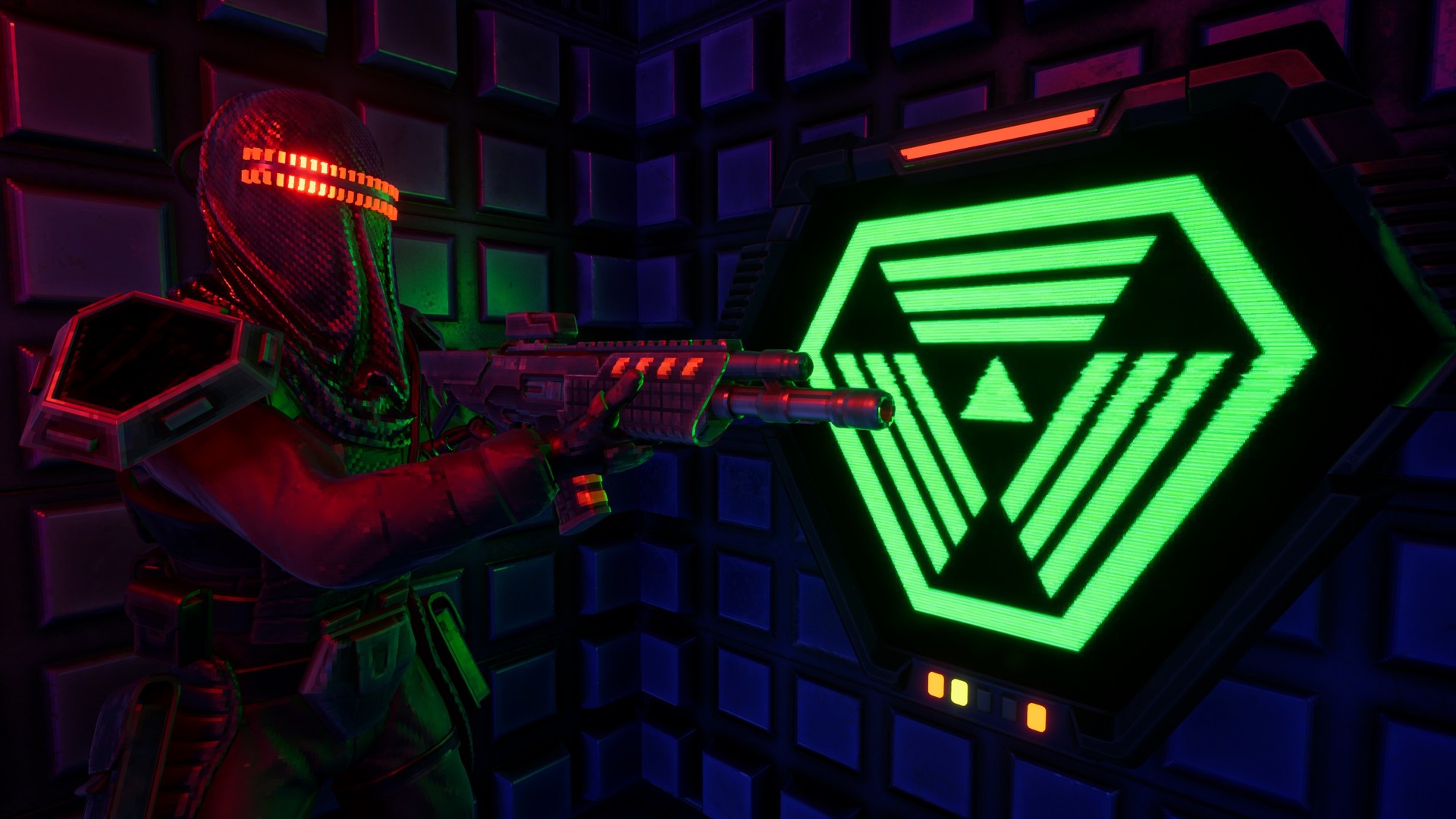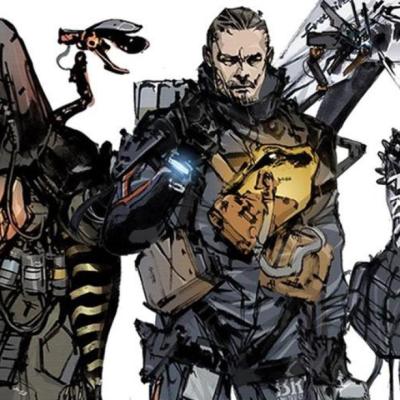When LookingGlass Technologies’ System Shock released in 1994, few people knew what to make of it. It was a first-person game with action and guns, but it most certainly wasn’t a first-person shooter like Doom, which had been released less than a year before System Shock. It featured navigation and level design similar to games like Ultima Underworld, but it wasn’t necessarily an RPG in most respects. While System Shock received quite a bit of praise from critics and players who took a chance on it, but it wasn’t exactly revered as a game-changer or considered a major hit at the time. In fact, LookingGlass lost money on the game.
But not long after System Shock’s release, a new breed of games began to emerge, PC titles that were clearly inspired by its innovations. Titles like Thief and Half-Life, both released in 1998, expanded on System Shock‘s emergent gameplay and first-person storytelling. Other games, such as 2000’s Deus Ex, were largely re-imaginings of the System Shock formula. By the time BioShock arrived in 2007, a “Shock” game was a bit easier to define. In fact, imagine playing BioShock in 1994 and you’ll have a pretty good idea why System Shock is typically referred to as a game ahead of its time.
Even in that respect, the case of System Shock has always been a strange one. Because so many of the games that followed in System Shock’s footsteps went on to become more successful (at least in terms of sales), there are times when System Shock is remembered more for the games it inspired than LookingGlass’ original experience. That’s a legacy that Nightdive Studios, the team behind the upcoming System Shock remake, is well aware of.
“The original System Shock was a ground-breaking experience that inspired a generation of amazing games and developers, though, today, it’s been largely forgotten,” says Stephen Kick, CEO and founder of Nightdive Studios, who spoke to Den of Geek via email. “One of the driving motivations of developing this remake was to expand the reach of the original.”
Nightdive Studios’ desire to bring System Shock into the modern age shouldn’t come as too much of a surprise. After all, Nightdive was founded as part of an effort to re-release System Shock 2 for modern platforms, and the studio has spent most of the last eight years restoring and re-releasing classic games such as The 7th Guest, Doom 64, and even the original System Shock.
It was actually Nightdive’s work on an enhanced version of the original System Shock that convinced the team that the game deserved something more substantial.
“After we recovered the source code of the original and implemented mouselook and high-resolution support in the Enhanced Edition, we began to feel that underneath the complex and sometimes obtuse control scheme was a one-of-a-kind game,” Kick says. “[It was] something special that truly deserved to be revisited.”
While System Shock was indeed something special in 1994, its innovations may feel familiar to younger generations who take certain gameplay mechanics for granted in 2020. That means Nightdive has to answer a tricky question: how do you make System Shock feel special again for a new audience 26 years later?
“One of the constant struggles has been finding a balance between what the original did and what 20 plus years of game development and innovation have taught us,” Kick says. “System Shock was one of the first games that offered players a non-linear experience in a fully 3D world. It also allowed the player to customize the difficulty level of the various challenges they faced independently from one another, introducing an innovative system that to my knowledge has never been replicated…We knew that if we stayed true to the original and introduced modern conventions and mechanics that today’s audience expects that we could deliver an authentic Shock experience.”
Read more
Defining what constitutes an authentic System Shock experience seems to be the key to successfully remaking the original game. Despite a legion of imitators that have come and gone, there are still elements of the original System Shock which remain relatively unique to it. For instance, System Shock was much more mechanically complex than many of its spiritual successors (and its official sequel) — certain weapons and ammunition dealt specific types of damage to specific enemies while “dermal” patches found in the game offered perks but also buffs to your character. The game also focused less on stats and other traditional character building elements in favor of a system where players collected “hardware” upgrades throughout the game.
Yet, when asked what element of the original System Shock (and the System Shock series) best defines it and separates it from everything else out there, Kick offers a clear and confident answer: “I believe it’s SHODAN.”
“I’ve played just about every game that can credit its lineage to System Shock and I can’t think of one that has an antagonist as diabolical or even remotely as memorable as her,” Kick says. “Even when she’s not directly interacting with you, she’s there. Security cameras are whirring and spying on you, Citadel Station creaks and moans as she alters and modifies the structure to her will, the pipes hiss and hum as she infects every system. She’s always there and the environment feels alive even when you’re surrounded by death.”
For those who don’t know, SHODAN was the primary antagonist of the original System Shock. Actually, she’s much more than that. As an advanced A.I. hellbent on wiping out humanity, SHODAN may sound like a pretty standard villain, but she’s actually a somewhat tragic figure whose plans are largely based on her desire to find a place where she belongs and gain some understanding of her own existence. As noted above, her omnipresent nature often casts her into the role of a constant companion. And it’s not uncommon for System Shock players to become attached to SHODAN despite her hostilities.
Kick attributes some of the effectiveness of SHODAN as a character to the work of the actress who voiced her.
“You can’t talk about SHODAN without mentioning the work of Terri Brosius who lends her voice to the character,” Kick says. “Her voice is absolutely chilling and the intermittent clicks, pops, and distortions that permeate her lines sink deep into your subconscious. It’s been over 20 years since we’ve heard her and she’s still one of the most quoted antagonists in gaming…We’ve heard samples of new SHODAN lines and the individual blips, stutters, and noise have been meticulously considered and handcrafted to preserve her iconic voice.”
It may sound odd for a modern studio to highlight things like “clicks, pops, and distortions,” but that’s another element that has always helped define System Shock. It was, especially in terms of sound, an ugly game. Voices were often distorted in such a way that not only accurately reflected the condition of the game’s audio logs but enhanced the level of dread. Like the recent hit Amazon film The Vast of Night, it used antiquated audio techniques to more effectively convey the uncertainty of a bizarre event.
It’s certainly tempting to call System Shock’s audio quality a by-product of an era when such complex sound design was in its infancy. To be fair, there is some truth to that. While that may cause many to list the sound design as one of those aspects of the original game most in need of a modern makeover, Nightdive recognizes that System Shock was filled with rough edges which were ultimately part of its grand design.
“There has been a very conscious effort to preserve that ‘rawness’ from the beginning,’” Kick says. “We knew that we wanted the art style and overall aesthetics to call back to the original so we developed a technique where if you get close enough to objects that the textures break down all the way to their individual pixels.
“This was by design so that from far to medium distances, the visuals look high fidelity with full PBR material support. But, when you get close up, it resembles the retro aesthetic. It adds a really beautiful texture and grit to everything that has become a unique feature specific to our game. It was important that when you looked at a screenshot of System Shock next to a number of other games you’d be able to identify it immediately.”
While the game’s art style helps preserve key elements of the System Shock experience, there are other ways in which advancements in technology have helped Nightdive bring some of the PC classic’s ugliness to life in ways that just weren’t possible in 1994.
“Visually, one of my goals was to realize the true horror of what occurred once SHODAN assumed control of Citadel,” Kick says. At the start of the original game, you wake up from a coma to find that the self-aware AI has turned a once-prosperous space station into a grotesque nightmare.
“Every creature, mutant, and monster you encountered was once an innocent crew member who was reshaped and modified with child-like curiosity by a near-omniscient being, and I made it a priority to explore that using the tools and technology at our disposal. Some of the things we’ve created are nauseating and downright disturbing.”
Read more
As important as it was for Nightdive to retain and enhance certain System Shock qualities, the team also recognized that there are parts of the original game that simply don’t work as well now.
Consider those aforementioned audio logs, for instance. In 1994, it was shocking to think that a game could tell the bulk of its story through found audio. In 2020, Kick rightfully notes that such a storytelling technique has become “cliched and even parodied due to overuse.” Still, Kick describes those audio logs as being “quintessentially System Shock” due to the way that they “become somber reminders of the consequences of your actions.” As such, the team considers them irreplaceable.
That desire to retain the spirit of an idea while recognizing that the idea itself doesn’t necessarily work as originally intended resulted in Nightdive coming up with an elegant solution.
“The problem we faced was that the audio logs were placed so close together that you were constantly finding them and the length of each VO recording was not only slowing the player down, but they were overlapping,” Kick explains. “While you were listening to one audio log, you’d have already found another and that became very cumbersome. It was an easy fix, but we had to space them farther apart from one another to find a good balance. We’ve also re-written the logs to be a bit shorter and more concise with the information they convey.”
Audio logs are hardly the only way in which System Shock utilized design elements that were both technically outdated yet oddly essential to its core experience. There’s perhaps no better example of that contradiction than the game’s learning curve. System Shock was, in many ways, designed to be intentionally confusing and sometimes even frustrating. You weren’t meant to just blast through the game like a shooter, and mastery of its mechanics, interface, and controls demanded time and patience from the player.
While Nightdive has addressed one of those frustrating elements (its confounding controls, which were rooted in the era of primitive 3D exploration) without diluting that “hardcore” spirit of the original experience, there’s at least one other contradictory aspect of the original game that has raised difficult questions about the line between preservation and modernization.
“The level design is probably the worst offender,” Kick says of System Shock’s flaws. “Its labyrinthian design is archaic, but it’s undeniably System Shock.”
System Shock’s Metroidvania-like level design encouraged players to explore an expansive area in search of the way forward, but it was also often unnecessarily confusing. That typically resulted in the player running around without a clear sense of where they were, where they were going, and what they were supposed to be doing.
As frustrating as those parts of System Shock could often be, Kick suggests that our perception of System Shock’s learning curve may have as much to do with an overall change to how we look at games as well as how the game itself was designed.
“You should feel like a rat running through a maze under the watchful glare of a rogue artificial intelligence constantly testing you and obstructing your progress with her other experiments,” Kick says. “Contemporary games often hold your hand and direct you to the next objective with breadcrumbs or waypoints, removing the sense of dread, isolation, and relief you feel when you discover the exit. We’ve received some negative feedback about the level design, but it’s System Shock, so it stays.”
That philosophy not only captures why Nightdive is the perfect studio to revive System Shock but why there are so many who believe that System Shock is one of those pieces of PC gaming history which deserves a remake despite the fear that it won’t live up to memories of the original.
Even if you’ve never tried it, you may feel like you’ve played System Shock because you’ve played games like it. But you really haven’t. From its ambiguous philosophical nature to its brilliant antagonist and haunting cyberpunk aesthetics, only System Shock is System Shock.
While other games may have come along and evolved the System Shock formula, Nightdive is determined to ensure that future generations will never forget one of the PC titles that changed the medium forever.
“BioShock, Thief, Dishonored, Deus Ex, Prey, they all owe their existence to [System] Shock so, in that regard, we were not only motivated, but we were compelled to expand its reach as a way of honoring its legacy and the groundwork it laid for not only other games but the developers of those games,” Kick says. “So, no, I don’t believe that modern gamers are aware of how many video game concepts were introduced or refined by System Shock, but if we do our job right, hopefully they will be.”
System Shock is coming to Xbox One, PlayStation 4, and PC in 2020. You can download the Alpha Demo of the game on Steam and GOG now.




